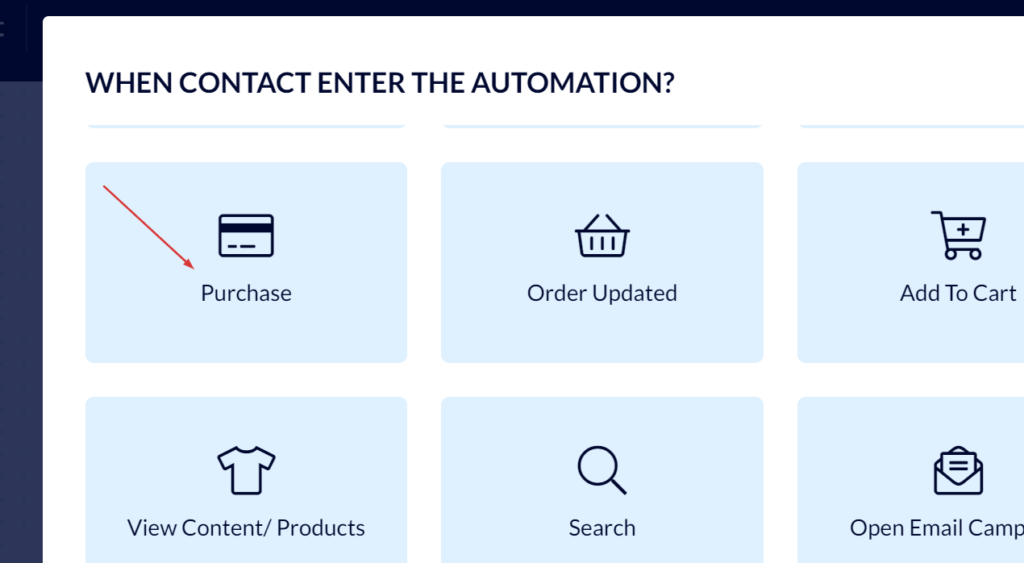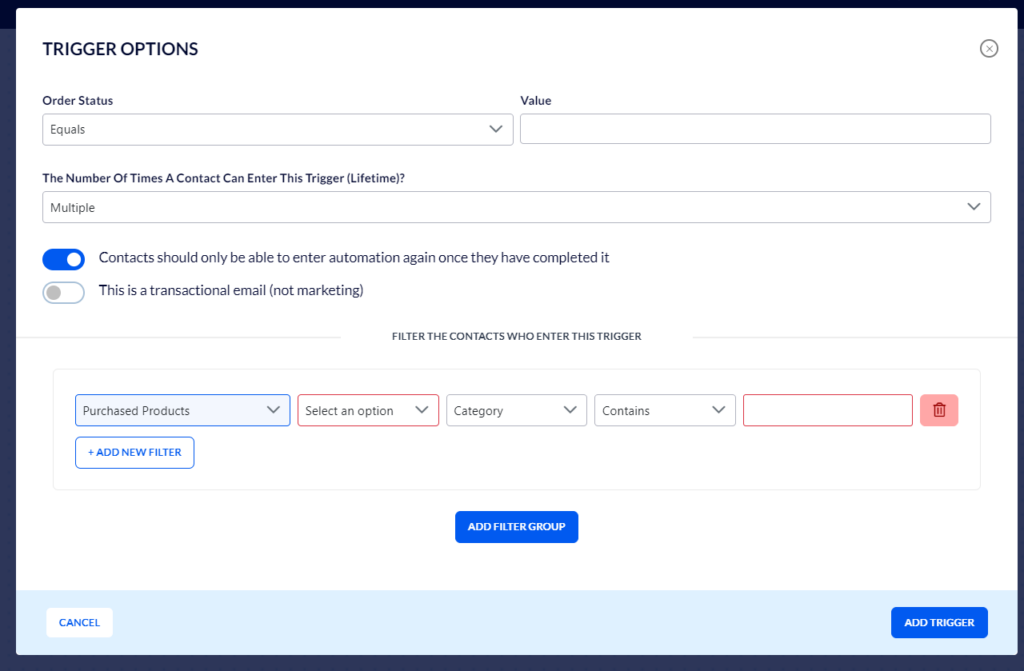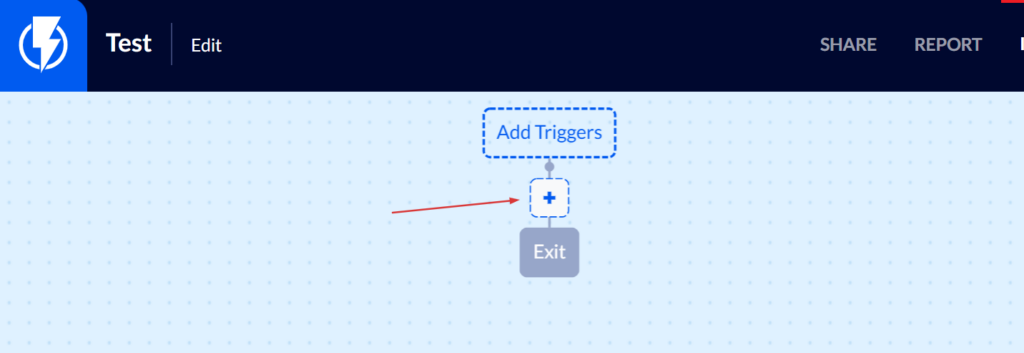Creating an Automation According to Products Purchased (from the customer’s complete purchasing history)
Flashy enables you to create an automation intended for customers who purchased or showed interest in certain products.
For instance, you may wish to create an automation for:
- Customers who purchased a certain product
- Customers who purchased a product belonging to a certain category of products
You can easily do this by following the steps described in this guide.
Please note that the reference will be to the customer's entire purchasing history (and not necessarily restricted to their last purchase alone).
How To Create an Automation for Customers who Purchased a Certain Product / Product Belonging to a Certain Category
Click "Automations" on Flashy's top toolbar.
Click "Create Automation".

Select the "Start From Scratch" template.

Fill in a title for the automation and click "Next Step".

You can now create the automation journey.
Click "Add Trigger".

Select the "Purchase" trigger.

Fill in the details on the screen that opens:
Under "Order Status" – select the order status by which completed orders are reported to Flashy.
- If, in your case, orders are reported at a certain status which then changes – you may add a "Hold" stage to the automation to make sure that the final order status is attained (i.e. the purchase has been completed).
Examples of different statuses on different eCommerce platforms:
WooCommerce – https://docs.woocommerce.com/document/managing-orders
Shopify – https://help.shopify.com/en/manual/orders/order-status
Magento – https://docs.magento.com/user-guide/sales/order-status.html
Eshop – nonexistent / order status is not sent, so there is no point in adding the "last purchase details" filter.
Cashcow – nonexistent / order status is not sent, so there is no point in adding the "last purchase details" filter.
Konimbo – nonexistent / order status is not sent, so there is no point in adding the "last purchase details" filter.
With stores that are custom integrated with flashy – that is, with code-built websites, not stores set up on one of the above-mentioned platforms, the programmer has to manually set up status reporting to Flashy. If this has not been done on your website there is no point in adding the "Last purchase details" filter.
Now, set The Number Of Times A Contact Can Enter This Trigger (Lifetime).
- If you select "Multiple" – make sure the toggle switch "Contacts should only be able to enter automation again once they have completed it" is activated.
Then, in the filters box add the "Purchased Products" filter.

Screening in Case of Specific Product/s
First, take note of how the product is listed in the Product Catalog (as opposed to its "front end" name on your website).
Select the relevant product catalog, then select "Product Title", then select "Contains", and then fill in the name of the product as it appears on the catalog.

In case several products are relevant you may click "Add New Filter" and add more products in the same manner:

If you add several products you must select "Match At Least One Filter" – so that customers will enter the automation if they buy product X or Product Y:

If you wish customers to enter the automation only if they buy both products X and Y- you may select "Match All Filters".

Screening in Case an Entire Product Category is Relevant
First, take note of how the category is listed in the product catalog (if you open the catalog's URL, it is under the "product_type" column).
It is important to make sure that the name of the category is identical to its name in the product catalog (as opposed to its "front end" name on your website).
Select the relevant product catalog, then select "Category", then select "Contains", and then fill in the name of the desired category:

In cases where several categories are concerned you may click "Add New Filter" and add more categories in the same manner:

If you add several categories you must select "Match At Least One Filter" – so that customers will enter the automation if they buy products from category X or category Y:

If you wish customers to enter the automation only if they buy products from both categories X and Y- you may select "Match All Filters".

To finish, click "Add New Trigger".
We shall now add the action we want to take place when the trigger occurs.
Click the blue "+" button:

Add the desired actions, and the rest of the customer journey according to your needs.
Finally, you can activate the automation by clicking the activation button at the top of the screen and the automation will begin funneling in customers, who will then go through the customer journey you have set up for them.



